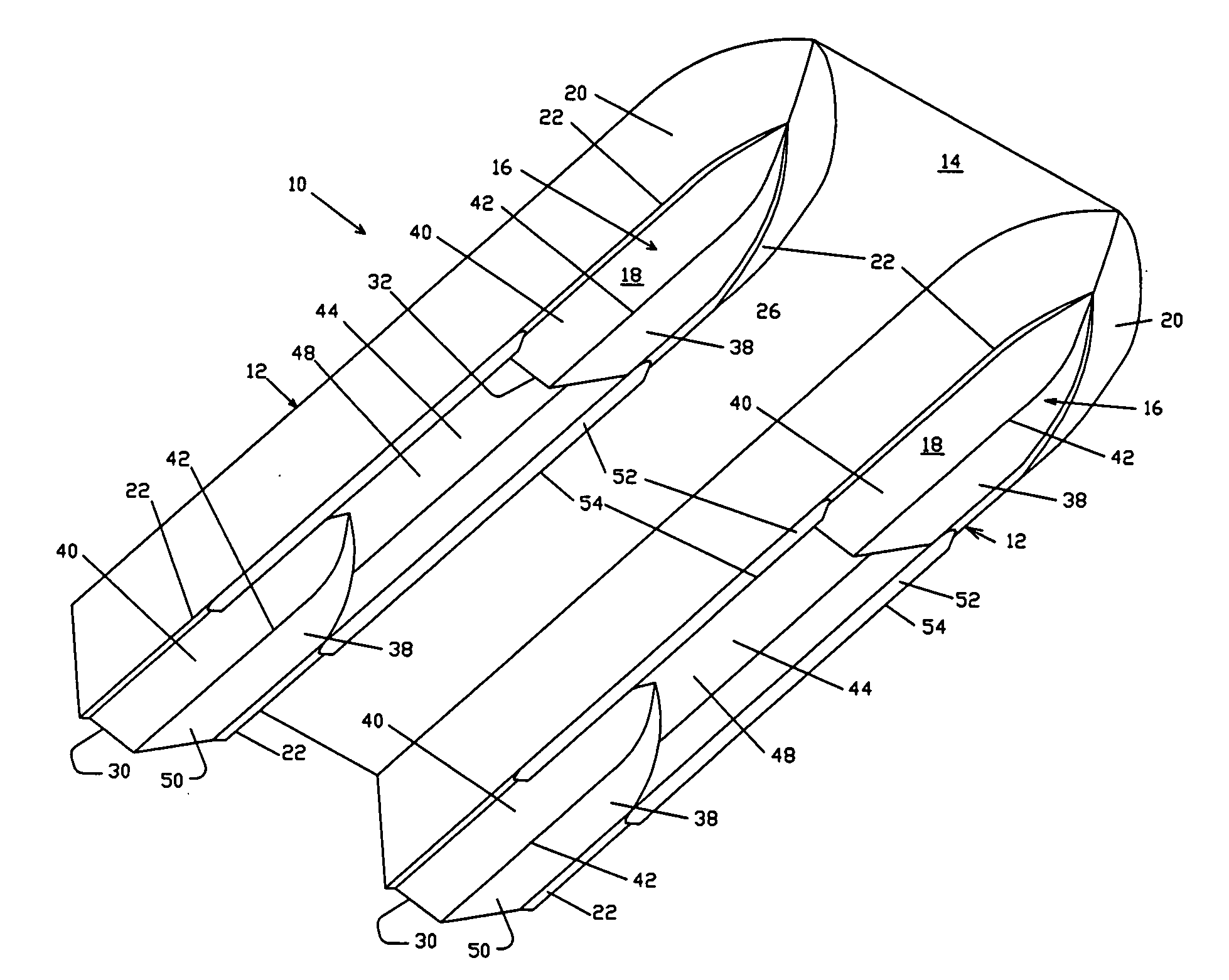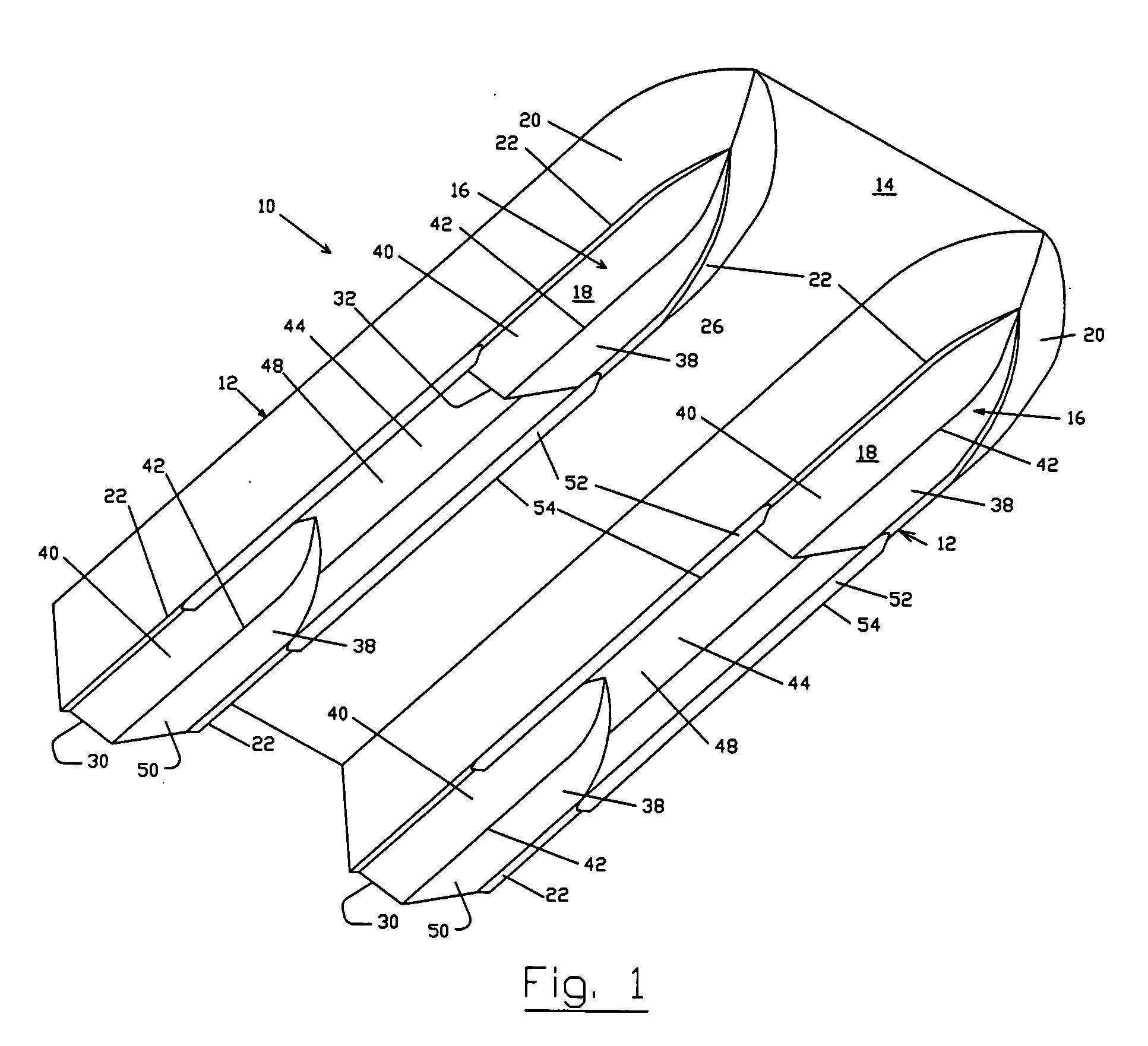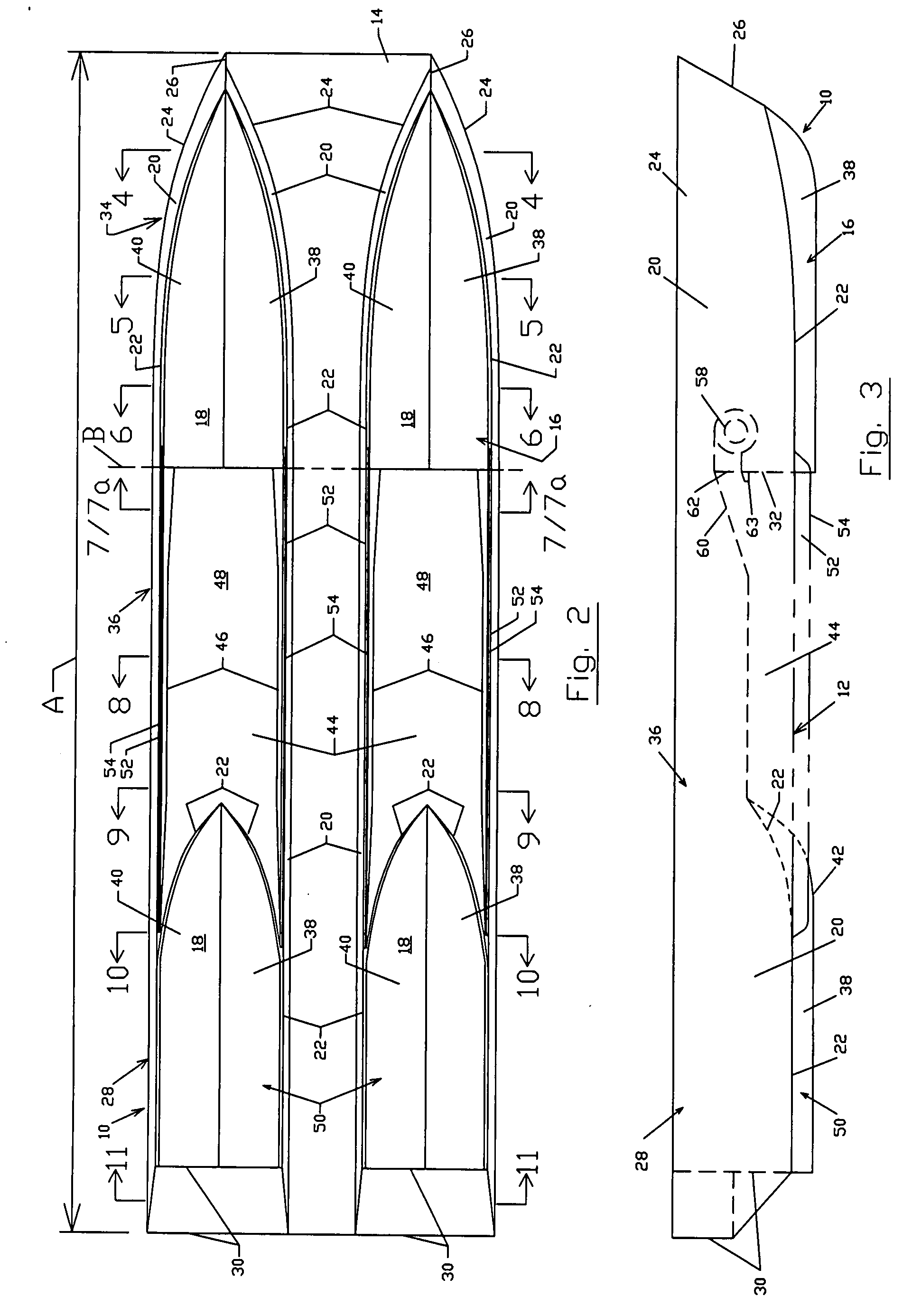Quadrapod air assisted catamaran boat or vessel
a catamaran and air-assist technology, applied in the field of marine boats or vessel hulls, can solve the problems of craft's hull falling into the water, affecting the safety of passengers, and unable to properly dispose of the pressurized air cushion to allow the use of water jet propulsors, etc., to reduce the resistance of the forward and aft hull sections, reduce the wake, and reduce the amount of power
- Summary
- Abstract
- Description
- Claims
- Application Information
AI Technical Summary
Benefits of technology
Problems solved by technology
Method used
Image
Examples
Embodiment Construction
[0028]A preferred embodiment for the quadra-pod hull is illustrated in the drawing FIGS. 1-11 in which the vessel is generally indicated as 10. Referring first to FIG. 1 it can be seen that the vessel hull 10 comprises a pair of catamaran hulls 12 that are joined to one another by a deck or cross structure 14.
[0029]As shown in FIG. 2, each catamaran hull has a longitudinal dimension, and comprises a bottom 16, that has exterior surfaces 18, a pair of opposing sides 20 that are attached to the bottom 16 and extend upwardly there from. For the purposes of this specification, the chine 22 defines the line of attachment of the sides 20 to the bottom 16. The first ends 24 of each side 20 are joined to form the bow 26, the second mid-length sections 36, and the third ends 28 are connected to one another by a transom 30 that extend transversely there between. A step 32, extends inwardly from the bottom 12, which can be seen most clearly in FIGS. 3 and 7, extends inwardly from the bottom 12...
PUM
 Login to View More
Login to View More Abstract
Description
Claims
Application Information
 Login to View More
Login to View More - R&D
- Intellectual Property
- Life Sciences
- Materials
- Tech Scout
- Unparalleled Data Quality
- Higher Quality Content
- 60% Fewer Hallucinations
Browse by: Latest US Patents, China's latest patents, Technical Efficacy Thesaurus, Application Domain, Technology Topic, Popular Technical Reports.
© 2025 PatSnap. All rights reserved.Legal|Privacy policy|Modern Slavery Act Transparency Statement|Sitemap|About US| Contact US: help@patsnap.com



